Know Your PDF
A great, yet cryptic, philosopher king once said: "To know PDF is to know the universe." Is this true, you expectantly ask? Is this really true? Well no, sadly it is not. But don’t be disheartened, for the truth about PDF is of far more practical value (albeit far less philosophical value). In truth, to know PDF is to know a dynamic and versatile file format that can dramatically simplify and expedite document viewing, integration, and printing. So while it might not bring epiphany, PDF can most certainly bring efficiency.
And now we get to the "knowing" part. First off, the letters P, D, and F compose a file extension—one of those three-letter codes that appear at the end of file names (like know_pdf_story.pdf). This extension is like a little file recipe; it describes the file ingredients and tells your operating system how to prepare it for (electronic) consumption. Like most file extensions, PDF is also an acronym: short for Adobe Portable Document Format. Adobe PDF is widely used by publishers, web writers, graphic designers, and everyday laypersons; and is generally accepted as the preeminent format for universal document exchange. But why is PDF so popular? PDF’s popularity and power originate from its five key attributes:
Compatible: PDF is a cross-platform file format. This means that PDF can be used to recreate documents irrespective of where they were originally created. Also, PDF will preserve the document’s original style and formatting (including color, font, and imagery) exactly as they were intended to be seen. With Adobe Acrobat Reader, virtually anyone, on any computer, with any platform, running any application version, can recognize, read, and print identical PDF files. Anyone. You included.
Active: PDF files are highly navigable—this means you can sail around documents like a
mini-Magellan. PDF files contain highly useful navigation tools like: internal and external links, structured bookmarks, search capabilities, thumbnail page views, multi-directional buttons, magnification options, and more.
Accurate: PDF files are both ultra-printable and ultra-viewable. PDF utilizes the PostScript language-imaging model—you know about the PostScript imaging model, right? No? Good. It would scare me if you did. Just remember that PDF ensures true, faithful, and crisp printing—the kind of printing you like. Also, PDF files viewed on-screen retain precise color regardless of software or hardware variation, and also retain precise clarity in magnifications upward of 500%.
Convenient: PDF files are both smaller in size than original source files (e.g. potentially 20% as large as HTML files) and easier to download and view. PDF documents also offer page-at-a-time downloading; allowing you to read and revise the early pages of a document before the entirety has been received. Further, because of their economical size, you’ll download the whole document quicker than you would a source file anyway. Because of these convenient characteristics, PDF files are often referred to as 7-11 files. Not really, though. Someone might laugh at you if you called them 7-11 files.
Secure: PDF offers extensive security protections. Users can assign security passwords to PDF documents before sending them to maintain strict control over sensitive information. Further, PDF files can be authenticated and secured with digital signature technology. A PDF feature known as SelfSign enables creators and users to restrict and track access to critical documents through the use of an encoded digital signature. This feature also enables users to say cool things like, "Sorry, Glen. It seems you’re not authorized to view this material."
Enough already, you say, I accept that PDF is divinely inspired. Clearly, the multiple benefits of PDF have now been sufficiently revealed. But we’ve been talking about PDF files in the prime of their lives—where, you might ask, do new PDF files come from? Well, Timmy, it’s complicated. When two computer applications love each other very much….oops, different question. Actually, there are five primary methods for creating PDF files.
1. Adobe Acrobat: main Adobe software for the creation and modification of PDF files. Allows users to create a PDF file by simply dropping-and-dragging a document into Acrobat, choosing the format directly from Microsoft Office, or converting scanned or web documents directly, among other methods.
2. Adobe PDF Writer: software that mimics a printer driver to create PDF documents from nearly any Windows application.
3. Adobe Acrobat Distiller: software for workgroup-oriented, automated high-volume conversion of PostScript files to PDF.
4. Adobe Acrobat Capture: software designed specifically for the conversion of scanned image files to PDF—optimized for character recognition and clean-up.
5. Other software: other Adobe graphical and publishing software such as FrameMaker, PageMaker, and Illustrator can be used to automatically create PDF files. Also, a surplus of third party software like EZ-PDF, ActivePDF Printer, and even QuarkXPress offer PDF creation capability.

